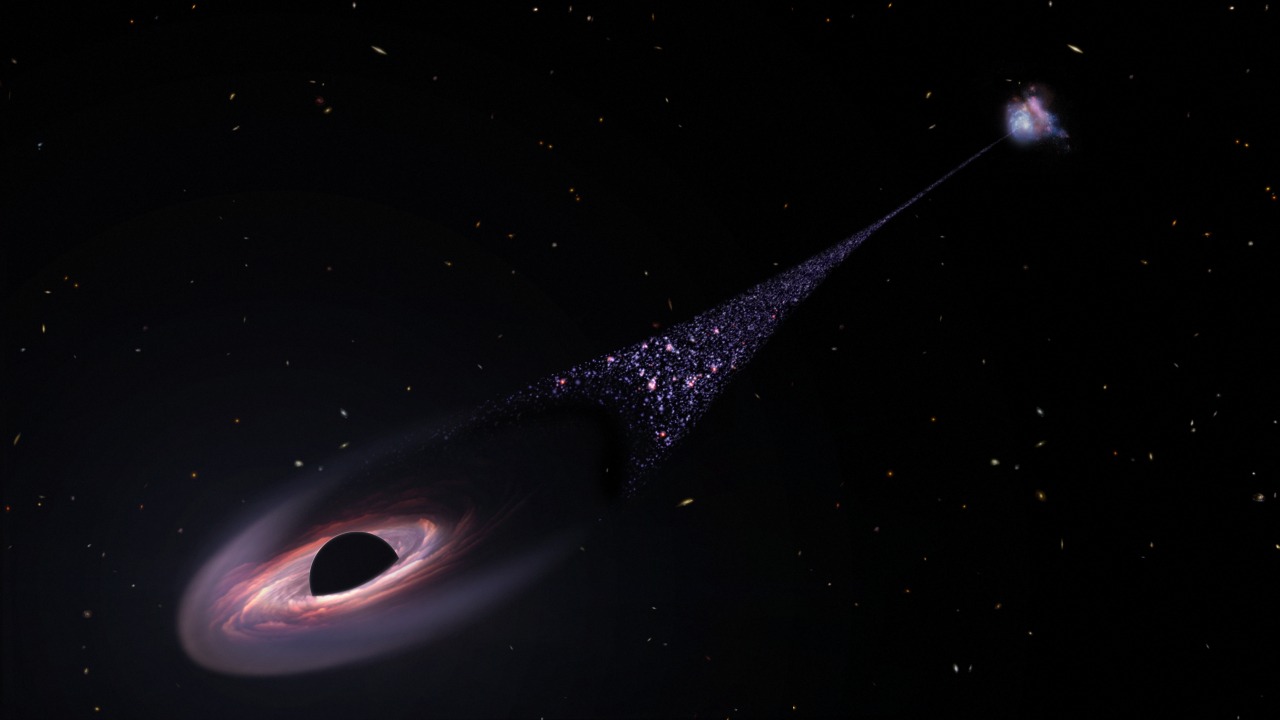Black holes have a reputation as terrible monsters that devour everything within the radius of their gravitational influence, and they are also suspected of links with mysterious dark energy. At the same time, they can also participate in the formation of new stars. Scientists using the Hubble Space Telescope noticed a huge tail of a runaway black hole, in which there were many young stars.

While most very large black holes, which are called supermassive, are located in the center of galaxies. But sometimes these space hungry animals can be found alone, wandering through the cold depths of space. This concerns a recently discovered black hole with a mass of 20 million Suns, which is rushing through outer space at great speed.
It probably formed as a result of the merger of two galaxies, each with its own supermassive black hole. Then the third galaxy came too close, and in the chaos of the three-way merger, one of the black holes was thrown out with incredible acceleration. It rushes so fast that if it is in our Solar system, it would cover the distance from the Earth to the Moon in 14 minutes.
Since then, a lonely black hole has been traveling through space. Now it is followed by a tail of stars 200 thousand light-years long. This is twice the diameter of the Milky Way. It seems the effect has occurred due to the fact that the black hole on its way crashes into interstellar clouds and leaves a trail of incandescent gas behind it, creating a cozy environment for the formation of stars. This phenomenon was observed for the first time, and it was noticed by chance when researchers viewed the Hubble image and examined what looked like scratches on the pictures.
Earlier we reported on how the mystery of black holes was revealed.
According to The Astrophysical Journal Letters
Follow us on Twitter to get the most interesting space news in time
https://twitter.com/ust_magazine

